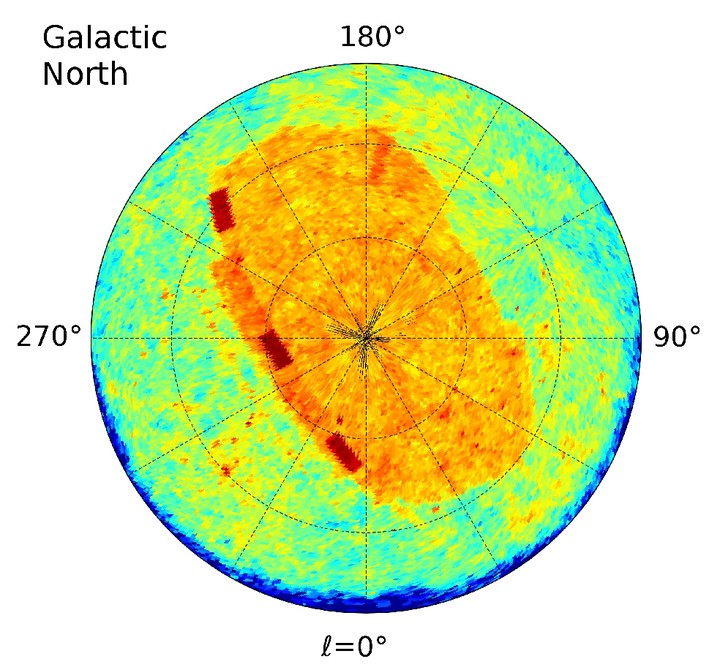GLADE
 The number density of galaxies in GLADE along the Galactic North
The number density of galaxies in GLADE along the Galactic NorthSearching for gravitational-wave counterparts with electromagnetic waves requires galaxy catalogues. Because we expect that the majority of gravitational-wave events should happen in the Universe where stuff exists, i.e., galaxies, having a galaxy catalogue significantly increases the chances of finding a counterpart. Finding an electromagnetic counterpart allows us to do lots of cool science; as an example, the most recent (and so far, only) gravitational and electromagnetic wave event GW170817–GRB 170817A–AT 2017gfo is cited in more than 1800 articles.
I and my collaborators produced GLADE, a galaxy catalogue for multimessenger searches in the advanced gravitational-wave detector era. I contributed to this work by developing a statistical method to merge different smaller galaxy catalogues into a single, bigger catalogue (GLADE). It is not straightforward to merge multiple galaxy catalogues into one because some of the entries in the catalogues may actually be referencing the same source. Hence a method that avoids duplicate entries is desirable.
The method I developed to merge different catalogues into one while avoiding duplicate entries relies on the fact that there are duplicate entries in galaxy catalogues. For example, we would expect different all-sky catalogues to observe M31 (one of the biggest and closest galaxies to us) and some other bright galaxies. By identifying objects with the same name between different galaxy catalogues, we can the variance of various parameters between different galaxy catalogues. This allows us to select a contamination threshold, e.g., 0.99, meaning that 1% of the duplicates are falsely identified as two different galaxies.
For more, read our article published in MNRAS: link.